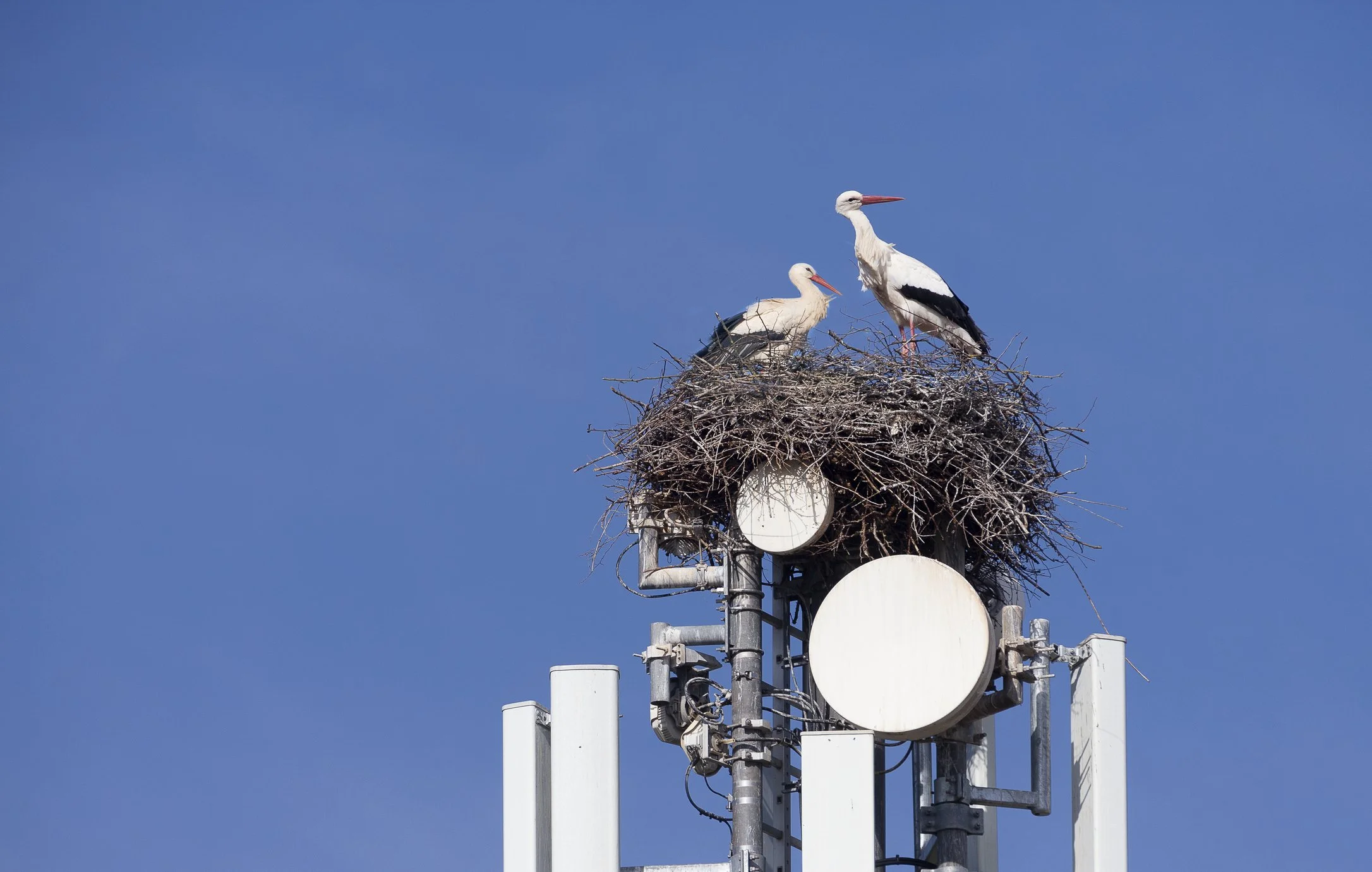Environmental Impact of EMFs
I’ve documented in great detail the effects EMFs have on human biology, and the mechanisms of action of non-ionizing EMFs we experience every day. I’ve also given examples of real human experiences with EMFs. These alone, I hope is worth a double take on the souring implementation of all our G’s.
3G, 4G, 5G … and on.
Here, we dive into the broader environmental impact of our electrical endeavors.
Pollinators like Bees and many birds use the earths magnetic field to navigate. Honey bee colony collapse disorder (CCD) is one well known environmental issue. Most attribute this problem to pesticides and viruses. But multiple studies have shown how wireless radiation negatively impacts these bees.
Engels et al. (2015) demonstrated in a double-blind experiment with European robins that migratory birds were unable to use their magnetic compass in the presence of urban electromagnetic pollution that ranged from 50 kHz to 5 MHz.
In this study, electromagnetic waves originating from mobile phones were tested for potential effects on honeybee behavior. Mobile phone handsets were placed in the close vicinity of honeybees. The results revealed that active mobile phone handsets have a dramatic impact on the behavior of the bees, namely by inducing the worker piping signal which usually either announces the swarming process of the bee colony or is a signal of a disturbed bee colony.
A landmark three part 2021 research review on effects to wildlife published in Reviews on Environmental Health by U.S experts journalist Blake Levitt, Dr. Henry Lai and former U.S. Fish and Wildlife senior biologist Albert Manville state current science should trigger urgent regulatory action citing more than 1,200 scientific references which found adverse biological effects to wildlife from even very low intensities of non ionizing radiation with findings of impacts to orientation and migration, reproduction, mating, nest, den building and survivorship. This 150-page report has more than 1,200 references (Levitt et al., 2021a, Levitt et al., 2021b, Levitt et al., 2021c).
“We found that transient exposure to EMF reduces a bee’s ability to learn, reduces their memory retention, affects flight and foraging behavior all of which could potentially reduce their ability to pollinate.” - Extremely Low Frequency Electromagnetic Fields impair the Cognitive and Motor Abilities of Honey Bees
“All insects showed a general increase in absorbed RF power at and above 6 GHz, in comparison to the absorbed RF power below 6 GHz. Our simulations showed that a shift of 10% of the incident power density to frequencies above 6 GHz would lead to an increase in absorbed power between 3–370%. This absorption may cause dielectric heating10. Heating affects insect behavior, physiology, and morphology11. Reviews of studies that investigate RF heating of insects are presented in12,13,14” - Exposure of Insects to Radio-Frequency Electromagnetic Fields from 2 to 120 GHz
The results of a google search for scholarly articles on the impact of EMFs to insects and wildlife are overwhelming. The insect population in particular has taken a nose dive to a small fraction of what it once was.
Why should we care about insects?
Well, because insects are alive. Carrying on their own samsara, desires, and mysterious private activities. But they also play essential roles in our ecosystem.
They are pollinators. According to the U.S. Natural Resources Conservation Service, roughly 35% of the worlds food crops depend on pollinators to reproduce. According to the U.S. Fish and Wildlife Service, more than 100,000 different animal species play roles in pollinating the 250,000 kinds of flowers and plants. I don’t think the next solar powered Japanese made robot bee replacement is quite up to that task.
Some insects break down dead materials like leaves and animals, and turn them into simpler matter, providing nutrients to plants and algae.
Plants will feel the loss of these insect populations, and so will birds, lizards, and everything on up the food chain. Some bugs control plant pests and others feed the beautiful wildlife we know and love. In reality, bugs are an essential part of our existence.
Birds and other wildlife
A now retired US Fish and Wildlife Service biologist, former lead on on telecommunications impacts, Dr. Albert Manville wrote the US FDA that, “as a certified wildlife biologist and Ph.D. environmental scientist who has studied the impacts of radiation on migratory birds, other wildlife, and humans since the late 1990s, the statement [on safety] credited to the FDA is preposterous, without any scientific credibility, and at a minimum deserves a retraction by the FDA.There currently are well over 500 scientific, peer-reviewed papers addressing impacts of non-ionizing, non-thermal radiation on laboratory animals — many of the studies directly applicable to human health and safety.”
Flora and Fauna
“Because of unique physiologies, some species of flora and fauna are sensitive to exogenous EMF in ways that may surpass human reactivity.” - Effects of non-ionizing electromagnetic fields on flora and fauna, part 1. Rising ambient EMF levels in the environment
There is so much abundance of information on man made EMFs impact on wildlife, it’s overwhelming. I would like to give this topic the proper attention it deserves. So for now I will stop here, with the intention of returning soon to add more thoughtful information to this important topic.


